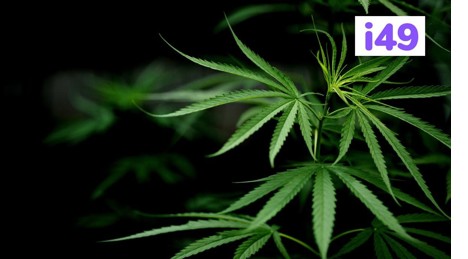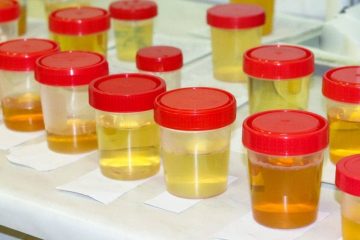Planning To Grow Cannabis? 12 Crucial Things To Keep In Mind

Puffing up weed smoke can be exhilarating, but what if we tell you that growing cannabis can be an equally enjoyable pursuit? Yes, plus there’s the commercial success to mull over. And what you have is a whole new activity to think about.
Growing cannabis is a fun, exciting, and rewarding activity that can yield you the best quality buds you’ve ever tried. The short journey of growing cannabis on your own can help you choose the best high and right buds that you always looked for.
A caveat, though! Growing cannabis is all fun and exciting until you miss out on a crucial aspect of its growth, and all the hard work turns futile. You must keep in mind and follow certain things as a part of your planning to grow cannabis.
Here, we present to you 12 crucial things to keep in mind before you start growing cannabis. You can also check out what experts have to say about this in leading cannabis suppliers websites like i49.net.
So, use this guide for knowledge on getting the best quality buds at the harvest time.
1. Knowing The Basics About Cannabis
Well, if you can’t be an expert, at least don’t remain an amateur.
It is crucial to have proper insight into the cannabis growth cycle before starting with the process. You must understand their basic life cycle, nutritional requirements, and plant structure.
Here, we have shared some must-know details about cannabis for better planning for growing weed.
- Cannabis is a flowering plant that can be of three types: male, female or hermaphrodite.
- Cannabis can be grown in various places: outdoors, indoors, and greenhouses.
- Naturally, cannabis male plants develop female flowers or buds for the generation of new seeds. You can keep the female plants un-pollinated to yield better quality buds.
- There are three types of variety in cannabis: Sativa, Indica, and ruderalis, with different effects and surface structures.
- Sativa and indica are usually photoperiod plants and flowers depending on the exposure to light.
- The cannabis life cycle is subdivided into three phases: seedling stage, vegetative stage, and flowering stage.
2. Knowing The Power Requirement
You must know the power source requirement for your cannabis plants to ensure their optimal growth. This is crucial for indoor growers as they will need a lot of artificial light to enable healthy growth.
You will need 400-600W to grow lights for ensuring 18 hours of light every day to the cannabis plants for their growth. You will also need power for other pieces of equipment like exhaust, fans, extractors, etc.
3. Understanding The Expenses
It is a simple fact that growing cannabis costs money, especially indoors. The cost of expenses varies with the desire of professionalism you want in cannabis growth.
The number of the equipment for indoor cannabis growth depends on your skills and growth size. However, every grower will need some crucial equipment like a fan, grow tent, small ventilators, light, air filter, pH meter, and timer.
Most of this equipment is reusable, enabling you with a one-time investment and yield better returns from the next harvest. So, hooray for the cost-effective entrepreneur inside you!
4. Knowing The Various Growing Methods
There are various growing methods and techniques used for cannabis. So, you should know about them and pick the one that suits your budget and skills.
The most common but effective way for cannabis growth is using soil. Here, as a grower, you have to add nutrients to the soil. You can use these nutrients via compost or buy them from stores.
You can also choose to grow in a medium other than soil, which is sand, water, coco coir, or misted air. ydroponic methods are best for skilled and experienced growers.
5. Choosing The Best Growing Space
It is crucial to pick a suitable growing space for your cannabis. You don’t need to own a mansion to grow cannabis. These cute little plants can take a small space and lead to big gains.
You can either choose to grow it indoors or outdoors.
Growing cannabis outdoors is budget-friendly and allows the complete natural growth of the plants. However, it has the drawback of no control over the climate and exposure of light on the plants.
Indoor cultivation of cannabis has several advantages. First, your plants will grow in a private environment without attracting any unwanted attention.
Moreover, you will enjoy complete control over the climatic condition, light exposure, temperature, and humidity. The main drawback is the cost of expense, which can be recovered after one or two harvests.
6. Knowing The Signs of Pest Attacks And Nutrient Deficiencies
Cannabis is prone to insects and pests attacks. Also, the plant’s health can be affected if its specific nutritional, water, and light requirements are not met on time or in the desired quantity.
This is why knowing the tell-tale signs of nutrient deficiencies and pest infestations is necessary to recover your plant back to its optimal health quickly. Some of the signs are:
- Pests Infestations: Signs are twisted leaves, white-spotted bite marks, brown or black buds, curling leaves, yellow or brown spots on foliage, etc.
- Nutrient Deficiencies: Signs include pale foliage, malformations, red stems, curling or spotted leaves, and stunted growth.
7. Understanding The Plant’s Nutritional Requirements
Similar to every other plant, cannabis requires nutrients to grow healthily. The essential nutrients needed by your cannabis plants are nitrogen, potassium, and phosphorus. You can find nutrient solutions in stores consisting of these compounds with different concentration levels.
Cannabis plants require other nutrients for their healthy and rapid growth. These include sulfur, manganese, calcium, boron, magnesium, zinc, iron, molybdenum, and copper. However, you must use the right proportion of these nutrients to ensure the best growth.
8. Knowing The Grow Light Basics
Let the light of knowledge shine upon thee!
For indoor growers, it is crucial to know the basics of growing light. This is the most vital aspect of your cannabis growth. You can pick from these widely used and popular grow light sources:
- CFLs: This is the best option for new growers as they are inexpensive and suitable for small harvests.
- Fluorescent Lighting: You can choose T5 or T8 lights as they emit low intensity of light. This light must be hung very close to your plants, making it ideal for small growing spaces.
- LED Lights: These are the most expensive yet highly effective lights. These lights help to save your power consumption and give the best results.
- MH and HPS: These lights are a cheap yet effective source of grow lights for cannabis growth.
9. Choosing The Right Strain
There are more than a thousand cannabis strains available. So, you must know about the various strains before you start to grow. You must research and pick the one that best suits your budget, growth space, and skills.
Strains mainly decide the type of high effect that you want from the harvest results. For instance, the Sativa gives a smooth high effect for active users, whereas the Indica gives a relaxing effect. So, know your needs, do research and choose the strain accordingly.
10. Keep your Privacy
If cannabis growth is legal in your state, then you can skip this point. If not, then follow this point, as growing cannabis privately will be crucial.
It can be fascinating and bragging to tell your friends about growing cannabis. However, the consequences of this can be huge. If growing indoors, use a proper ventilation system as the neighbors can always be a pain in your head.
Try to stay down low as much as you can and enjoy your harvest secretly.
11. Monitoring And Evaluating The Performance
It is crucial to monitor and evaluate your performance while growing cannabis. You can take notes to make a document of the progress in cannabis growth.
You can take photos of the plants every week to document their growth progress for later analysis. You can also maintain a growth journal to write down the crucial details, changes, and requirements, such as the light schedule of the plant in its growth cycle.
This will help you keep track of every factor affecting the plants to proceed with further solutions. If you’re a new grower, then this method will be highly beneficial as you can revisit the work to improvise your harvest.
However, if you’re growing weed in an illegal state, keeping notes may not be a good idea. This is because police can take legal actions based on your harvesting history on the notes. In such cases, visual tracking with the consciousness of the mind is the best solution.
12. Knowing About Harvesting
Lastly, if you’re planning to start your cannabis growth, you will be curious to know about the harvesting stage.
First, you must know about the various stages included in harvesting and how they affect the potency and high-effect of the buds.
If you harvest the buds much earlier, it will tend to give more uplifting effects. However, if the buds are harvested much later, it will provide more relaxing and calm effects.
After the harvest, you have to take your buds for the process of trimming, drying, and curing. Then, the buds will be stored in mason jars for a week or two for the best results and ready-to-smoke buds.
Conclusion: Start Growing
So, here you have all the necessary details and crucial points available for the optimal growth of your cannabis plants. You must check these essential points carefully and follow them to plan your cannabis growth.
With proper insights about growing cannabis, you can start ordering your cannabis seeds and grow the best quality cannabis.
Happy Growing! Happy Harvesting!











